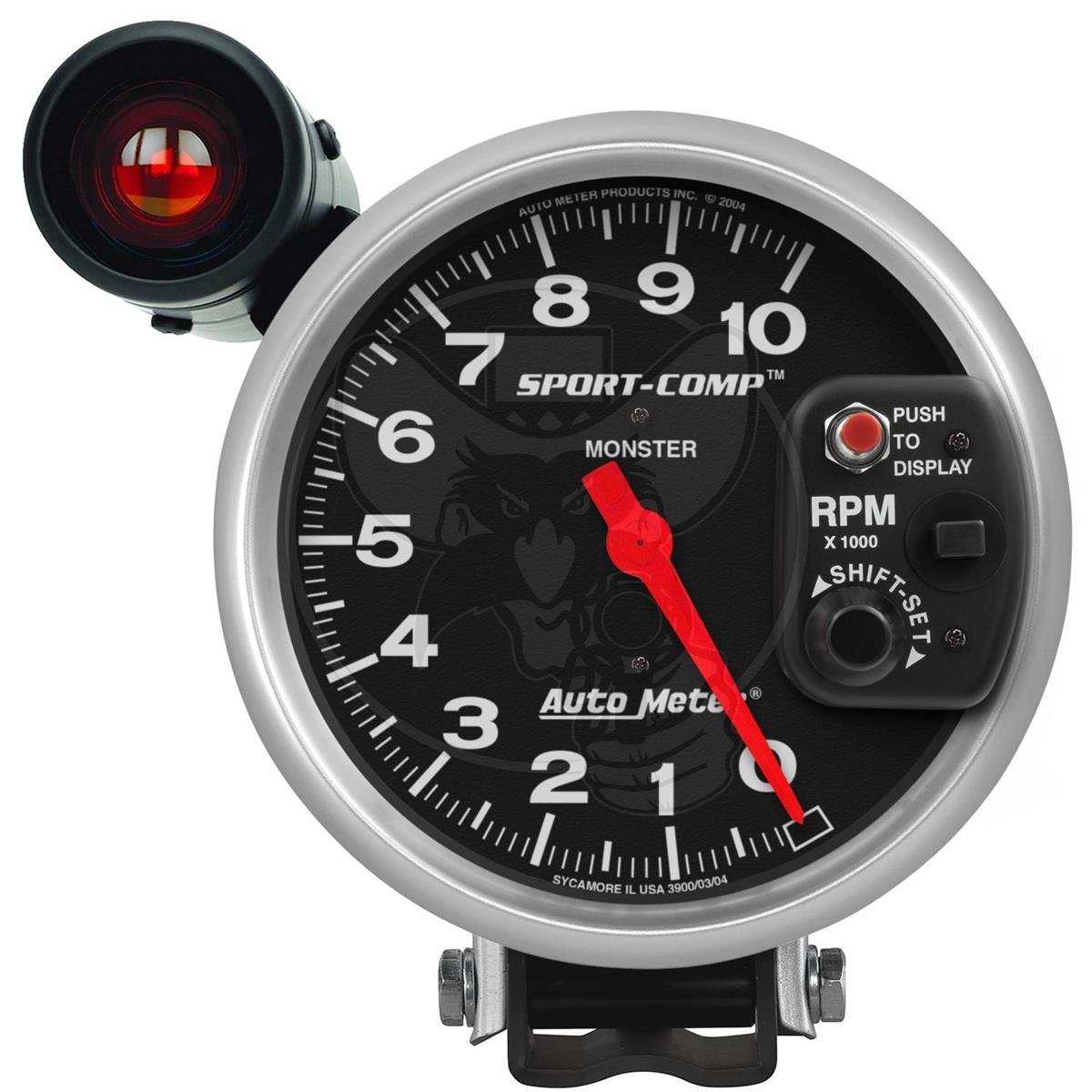Discovering the Functions and Advantages of a Tachometer: A Comprehensive Overview for Car Lovers
In the world of automobile instrumentation, the tachometer stands as an essential tool that offers chauffeurs important insights into their automobile's efficiency. tachometer. From supplying real-time information on engine speed to helping in enhancing gear shifts, the tachometer functions as greater than just a dial on the control panel. Its complex features not only improve driving experience but likewise play a pivotal duty in keeping engine wellness and performance. As we explore the detailed workings and benefits of a tachometer, a much deeper understanding of its significance for auto enthusiasts and professionals alike will certainly unravel.
Comprehending the Fundamentals of a Tachometer
In the world of automobile instrumentation, recognizing the basics of a tachometer is vital for any type of auto fanatic looking to delve into the complexities of engine efficiency monitoring. A tachometer, typically presented on the dashboard of an automobile, determines the engine's revolutions per minute (RPM)
Tachometers usually have actually a range marked in changes per min, with a redline indicating the maximum speed at which the engine can safely run (tachometer). This info is crucial for preventing engine damages and optimizing equipment shifting for manual transmissions. Additionally, tachometers can help in identifying engine problems such as misfires or a stopping working ignition system by detecting irregular RPM readings
Significance of Keeping An Eye On Engine Speed

Keeping track of engine speed is a vital aspect of vehicle maintenance and performance optimization for vehicle lovers and professionals alike. The engine speed, determined in changes per min (RPM), shows just how fast the engine's crankshaft is revolving. By keeping a close eye on the RPM, motorists can make certain that the engine is running within the optimal variety, stopping potential damages from over-revving or stalling. Checking engine speed is specifically important during equipment shifts, as it aids chauffeurs determine the correct time to alter gears for smooth acceleration and reliable fuel intake.
Furthermore, tracking engine speed can likewise give important understandings right into the overall wellness of the car. Uncommon variations in RPM may indicate problems such as a clogged up air filter, fuel system issues, or also engine misfires. By discovering these problems early on through the tachometer analyses, chauffeurs can attend to possible concerns immediately, preventing much more severe damages and expensive fixings down the line. Overall, keeping track of engine speed with a tachometer is a basic method that can enhance driving performance, prolong engine life, and guarantee a much safer and much more delightful driving experience.
Enhancing Performance Through Equipment Shifts
Proper equipment moving makes sure that the engine operates within its optimum power band, enabling for smooth velocity and enhanced fuel economic climate. When shifting equipments, it is essential to pay focus to the engine speed indicated on the tachometer.

To accomplish peak efficiency via equipment changes, drivers ought to practice smooth and prompt changes between gears, matching engine speed with road speed to harness the full potential of their car's powertrain.
Making Best Use Of Efficiency With a Tachometer
Mastering the art of gear shifting in high-performance cars not just boosts driving experience yet additionally plays an essential role in taking full advantage of effectiveness with a tachometer. tachometer. By paying attention to the tachometer readings, drivers can optimize their equipment changes to run within the engine's most effective variety. When increasing, changing equipments at the ideal RPM suggested by the tachometer can avoid the engine from straining or underperforming, causing enhanced gas efficiency and total efficiency
Additionally, a tachometer aids vehicle drivers avoid unnecessary revving, which not only wastes gas however likewise puts unnecessary pressure on the engine. Continually checking the tachometer while driving permits smoother gear changes, reducing damage on the transmission system gradually.

Advanced Tips for Tachometer Usage
Enhancing driving accuracy through proficient tachometer interpretation is vital to maximizing my review here vehicle efficiency. To dive right into innovative pointers for tachometer use, think about including the usage of shift lights. Shift lights are visual indicators that light up when it's time to change gears based on engine changes per min (RPM), permitting for seamless equipment changes without regularly keeping track of the tachometer. In addition, exercising heel-and-toe downshifting technique can be valuable when going for smoother shifts between equipments. This technique involves using both the brake and accelerator pedals concurrently while downshifting, aiding to maintain engine RPM and avoid jerky motions. Moreover, utilizing an efficiency tachometer with personalized settings can provide her comment is here real-time data customized to particular driving preferences or automobile adjustments. By fine-tuning change points and setting cautioning thresholds, chauffeurs can enhance acceleration and engine efficiency while lessening the threat of over-revving. These innovative strategies, when paired with a deep understanding of tachometer analyses, can elevate driving proficiency and overall driving experience.
Final Thought
In conclusion, the tachometer acts as a vital tool for car enthusiasts to keep track of engine rate, improve efficiency with equipment changes, and take full advantage of efficiency. By comprehending the functions and advantages of a tachometer, More Help motorists can optimize their driving experience and extend the lifespan of their lorry. Using advanced ideas for tachometer utilization can better improve driving abilities and general efficiency when driving.
Comments on “How a Tachometer Helps Display Engine Wellness and Efficiency”